VET APPROVED

The information is current and up-to-date in accordance with the latest veterinarian research.
Learn more »Click to Skip Ahead
A guinea pig’s main diet should consist of hay, commercial pellets, vegetables, and fruit. Since guinea pigs are herbivores, they cannot digest meat or meat products. However, can guinea pigs eat flowers? What about herbs and other plants?
Foraging or growing plants and flowers is one of the best things you can do throughout spring and summer for your guinea pigs. Guinea pigs can eat most of the wildflowers that can grow right in your backyard. Just be sure to ask your vet for specific flowers and plants that are safe for you guinea pig and in what quantities.
In this article, you’ll learn exactly which flowers and plants are generally safe and which are unsafe for your guinea pigs to eat.

The 10 Flowers That Are Safe for Guinea Pigs
A common question resides with most guinea pig owners: Can guinea pigs eat flowers? Since guinea pigs are herbivores, it’s perfectly safe for guinea pigs to munch on and digest some flowers. Most flowers and plants you’ll read in this list can be found in your backyard.
1. Shepherd’s Purse
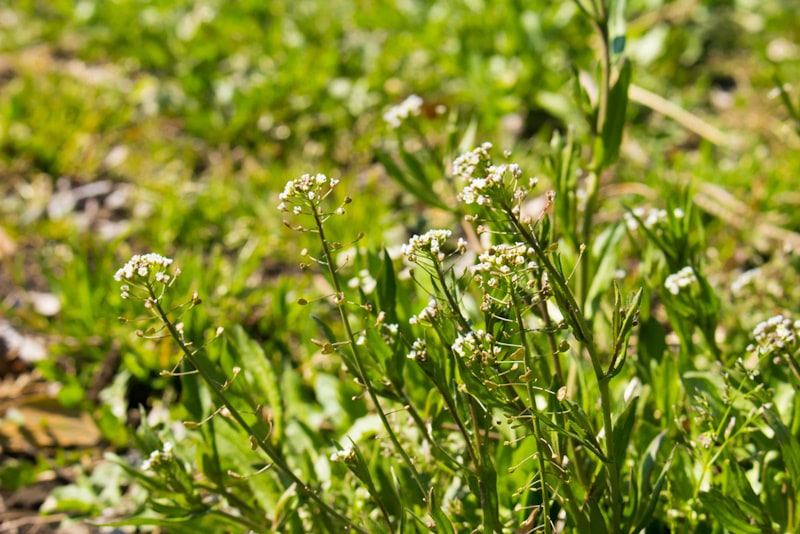
Shepherd’s purse, or Capsella bursa-pastoris, can help with diarrhea and stomach upset, which can benefit your guinea pig if they aren’t feeling well1. These flowers emerge during the late winter or early spring and can be found in grassy areas. However, they may grow year-round in coastal regions like California.
The flowers on a shepherd’s purse are about 10 to 15 millimeters, shaped like a buttercup, and often turn white or light pink. The stem can grow about 20 inches, and the rosette leaves are 3 to 10 centimeters long.
2. Dandelion
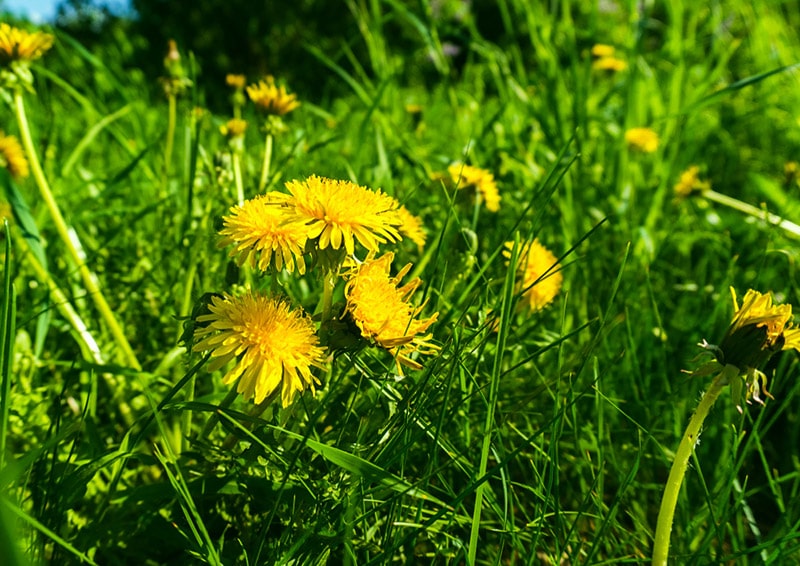
Dandelions (Taraxacum officinale) are perennial flowers that emerge every spring and grow almost everywhere. Stems, flowers, leaves, and roots benefit your guinea pigs as they contain much fiber, vitamin C, and antioxidants to sustain your pocket pal.
Dandelions pose a bright yellow, circular-shaped bloom and can grow up to 12 inches tall. Spatula-shaped leaves are found at the base of a dandelion plant.
3. White Clover and Red Clover
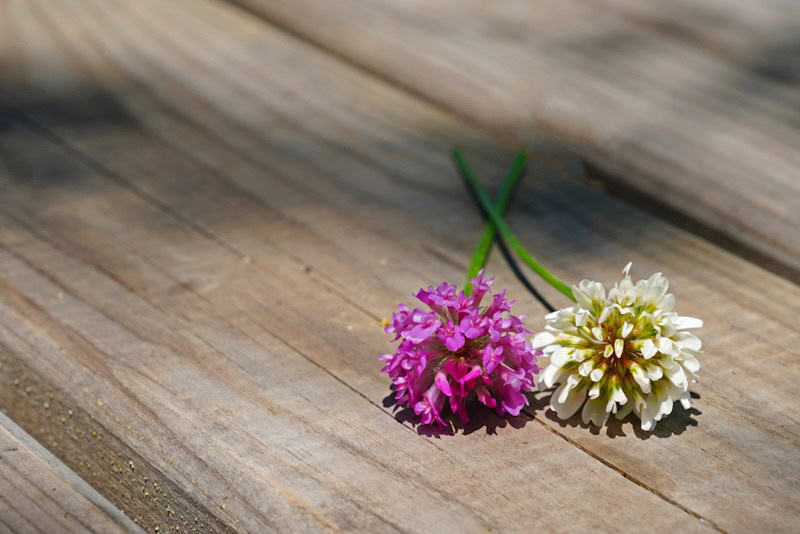
Red clover (Trifolium pratense) and white clover (Trifolium repens) contain high amounts of vitamin C, which is beneficial for guinea pigs since they don’t produce their own. Clover is also a decent source of calcium and phosphorus to help promote bone health.
Red and white clovers grow throughout much of the United States, where there is good soil moisture. White clover is usually shorter than red clover and grows laterally, whereas red clover grows straight and tall.
4. Plantain Weed
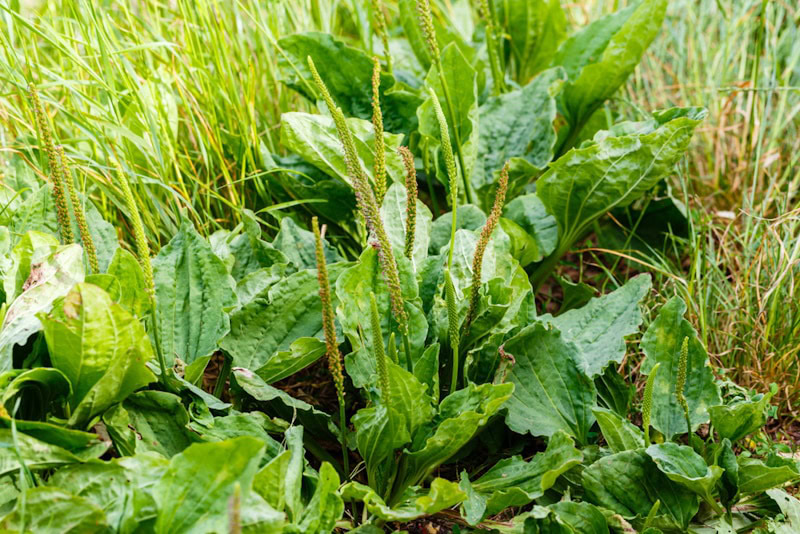
Plantain weed can be added to a guinea pig’s diet in a similar way as hay or grass. The high fiber content helps support regular digestion and proper tooth wear. Narrow or broadleaf plantain weed are both acceptable in fresh or dried forms.
5. Willow
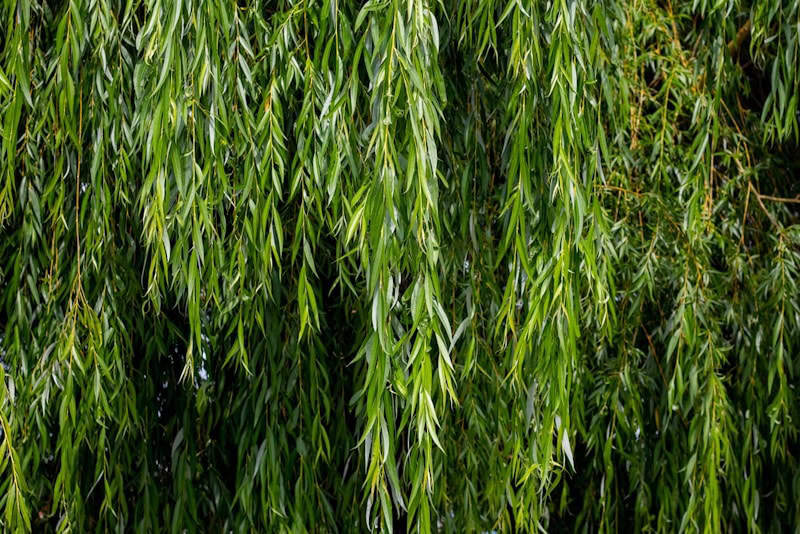
Willow grows near lakes, rivers, and ponds in cold or temperate regions. Willow sticks are great for natural dental care for guinea pigs and help beat boredom. Guinea pigs can chew on the hardiness of willow wood or enjoy the benefits of its leaves.
Willow may reduce anxiety in guinea pigs and small mammals since the leaves contain a natural analgesic and anti-inflammatory agent called salicin. However, moderation is vital with willow sticks or leaves, because they contain tannins, which can cause digestive upset if consumed in large amounts.
6. Blackberry
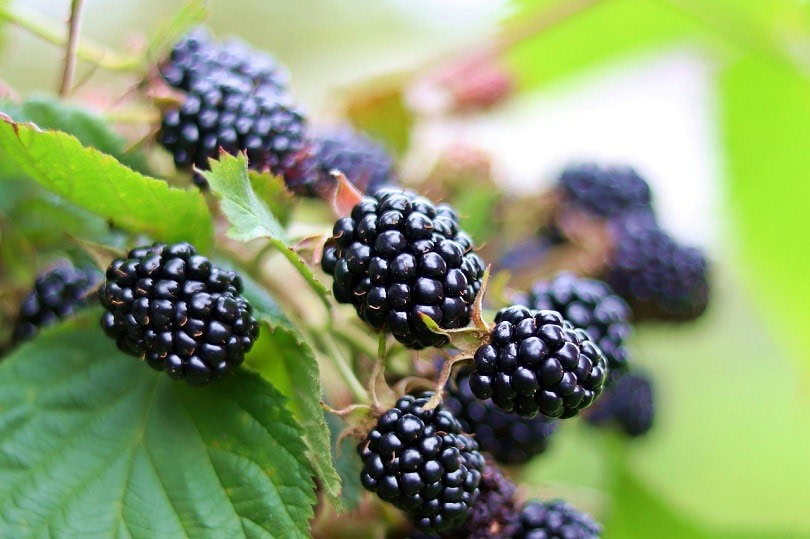
Blackberries are a nutritious treat your guinea pig will love, but what about blackberry leaves? Blackberry leaves are just as beneficial and contain many nutrients and vitamins to keep your guinea pig healthy. Remove the stems and prickles before providing your guinea pig with this tasty treat in moderation.
7. Rose
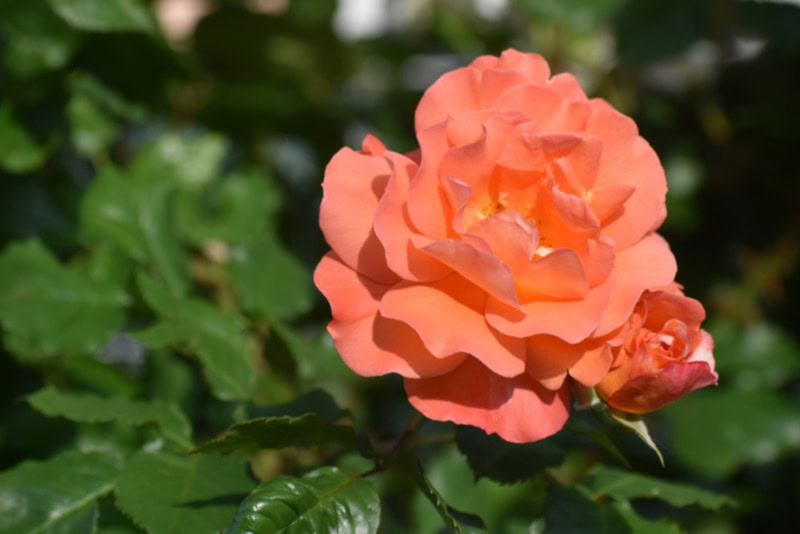
Roses have many uses, from perfumes to medicinal properties, not to mention they look beautiful, but they are also a healthy treat for guinea pigs. Roses and rose hips contain vitamin C, which can help meet your guinea pig’s dietary requirements. Ensure you’re only feeding your guinea pig the flower of a rose, as stems and leaves may harm them due to prickles.
8. Nettle
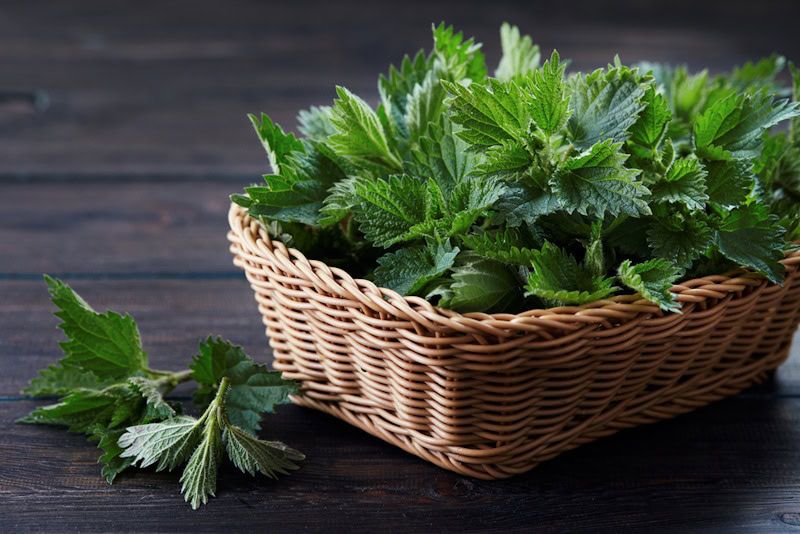
Nettle (Urtica dioica), when dried, loses the ability to cause the stinging sensation that we usually associate with them. This makes them a safe forage option for your guinea pig that provides lots of fiber for digestion and dental care. You can find nettle in damp areas with full sun or partially shady areas throughout Europe, Asia, and North and South America. Nettle grows about 6 to 8 feet tall, and the leaves are approximately 2 to 4 inches long.
9. Rosemary
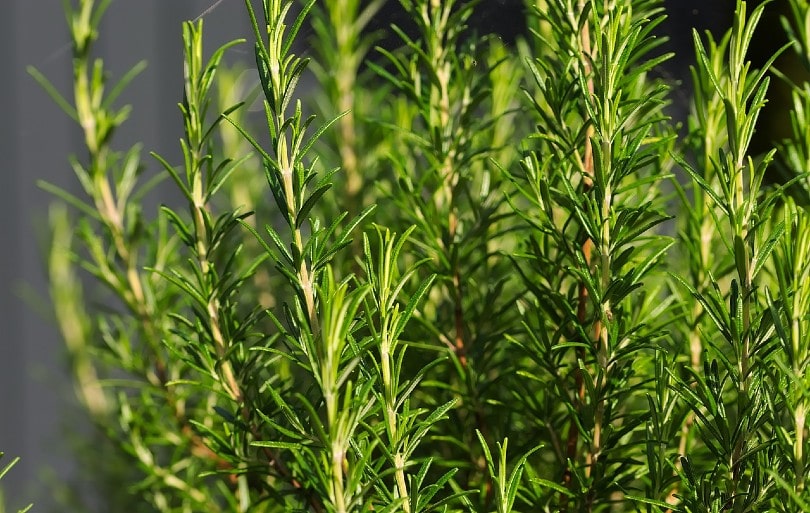
Rosemary, or Salvia rosmarinus, is a fibrous herb that may benefit your guinea pig’s healthy digestion. Rosemary also contains sufficient levels of vitamin C and A, which help in healing and brain function.
Rosemary develops beautiful blue-purple flowers with needle-like leaves. You can find rosemary in the Mediterranean region across southern Europe, as well as in Asia and North America.
10. Grass
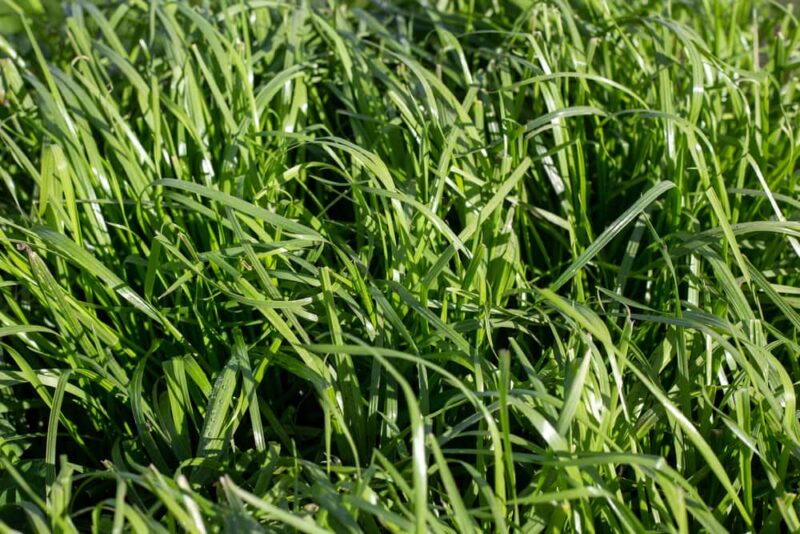
Grass acts like hay for guinea pigs. Providing an abundant supply helps guinea pigs grind down their two front teeth and provides fiber that helps aid in digestion. Fresh grass provides guinea pigs with some vitamins and minerals that help keep them strong and maintain a healthy body weight. There are a lot of types of grasses, however, so be sure you know the type you’re picking and speak to your veterinarian about which types are safe.
Lawn mower clippings are not a good idea, as they can make your piggie ill. You’ll also want to watch out for weeds, as some weeds are toxic to your piggie and will cause stomach upset.

Flowers That Are Unsafe for Guinea Pigs
In this article, we’ve also included flowers and plants that are unsafe for guinea pigs and must be avoided at all costs. Below is a list of plants that are unsafe for guinea pigs.
- Buttercups
- Honeysuckle
- Daisies
- Sunflowers
- Potato Leaves
- Wax Begonia
- Globe Thistle

Final Words
Most plants that are safe (and unsafe) for your guinea pigs grow right in your backyard. Once spring arrives, you can get outside and start foraging healthy and beneficial plants to sustain the dietary requirements of your pocket pal. Be sure to check in with your veterinarian about which plants and varieties are safe for your guinea pig and in what amounts before giving them anything that you forage.
Growing a garden specifically for your guinea pigs may also be recommended for the utmost safety. When foraging, be careful not to accidentally pick weeds, which can be toxic to your guinea pig.
Featured Image Credit: Pezibear, Pixabay
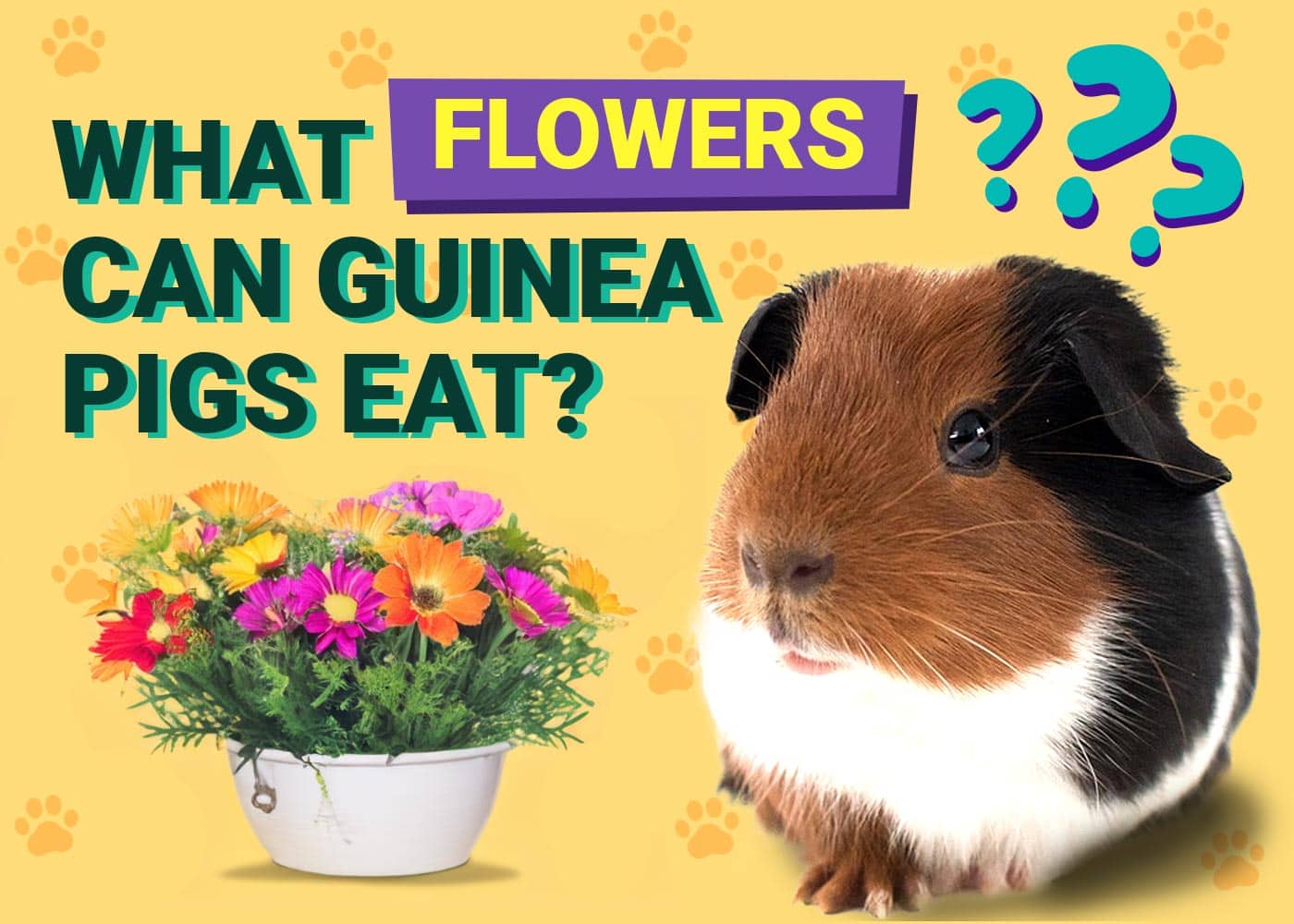





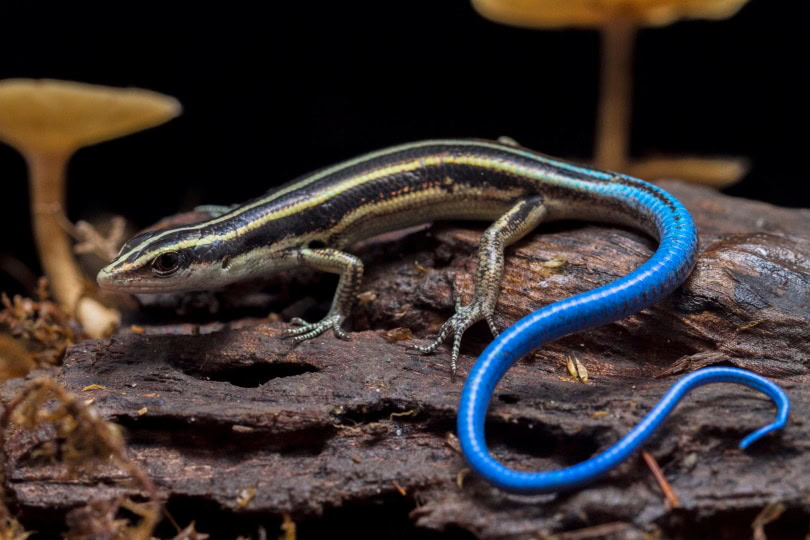




2 Responses
A small mouse has gotten in my Piggy’s cage.
My piggy has laid claim to it and will not let me get it out. Is this ok?
They don’t fight, more like share everything.
Hello David,
thank you very much for your question. As this may look fun, it is unfortunately not ideal situation.
Guinea Pigs are very social and the recommendation is to keep them in pairs. If this is a lonely one that’s perhaps the reason he or she is “claiming” the mouse. Both species have different needs, for example their diet is totally different, and behave and communicate differently, so they won’t really understand each other. Also, the guinea pig is much bigger than the mouse and could unintentionally injure it. Another huge concern here is that wild mouse might carry and transmit pathogens as well.
If you are struggling to get the mouse out of the cage, you could offer the guinea pig their favorite treat and place it in a temporary space while you remove the mouse from the cage.
Hope this helps!